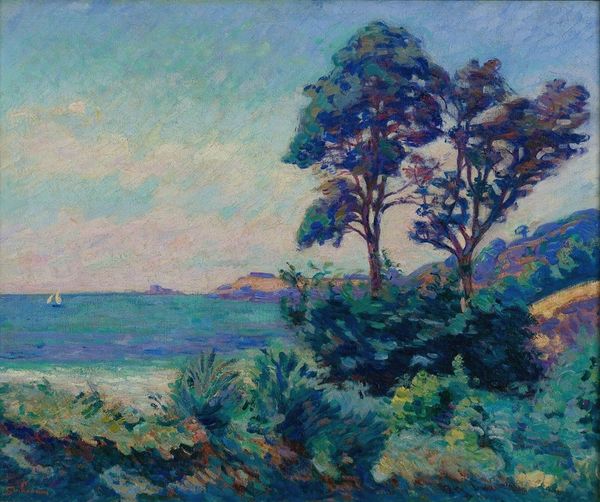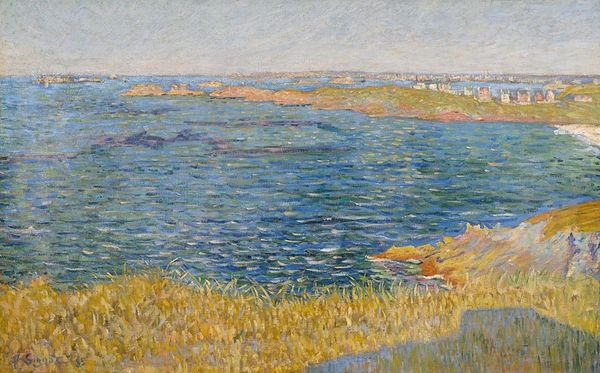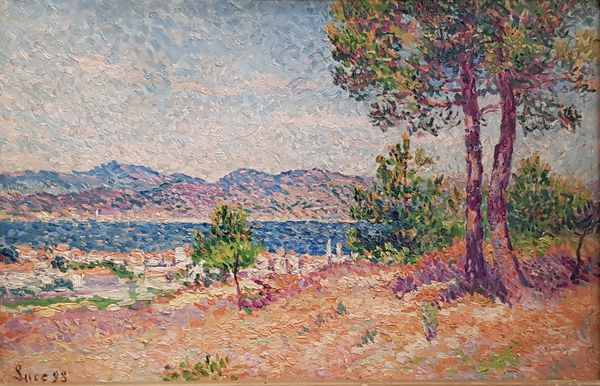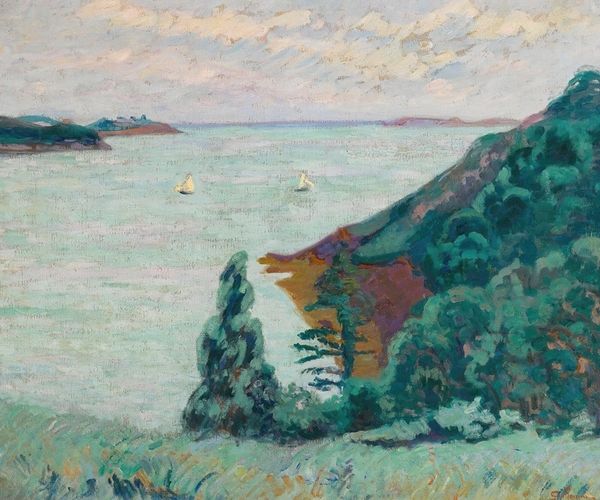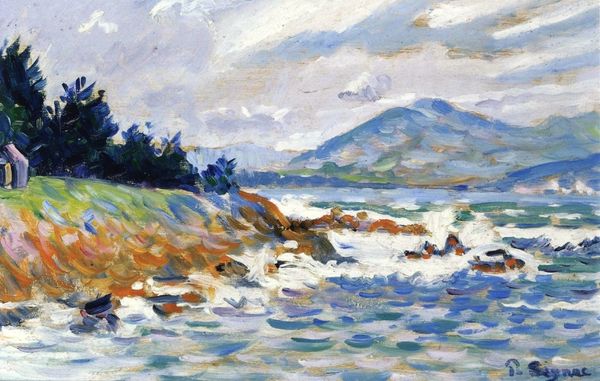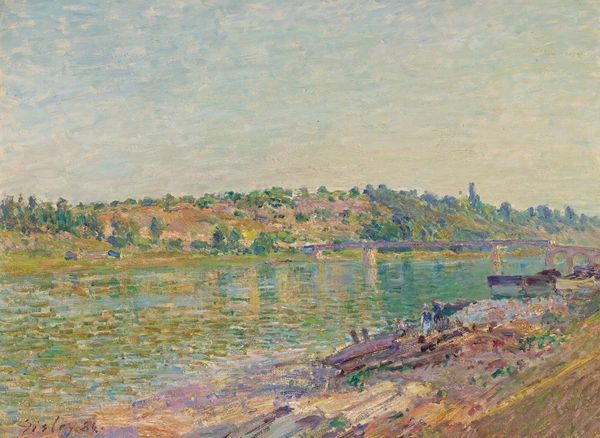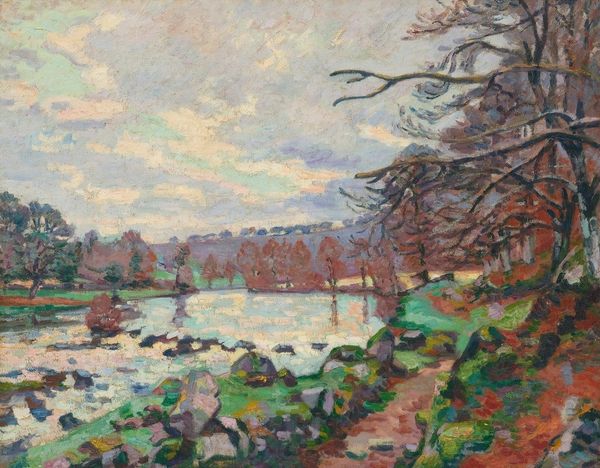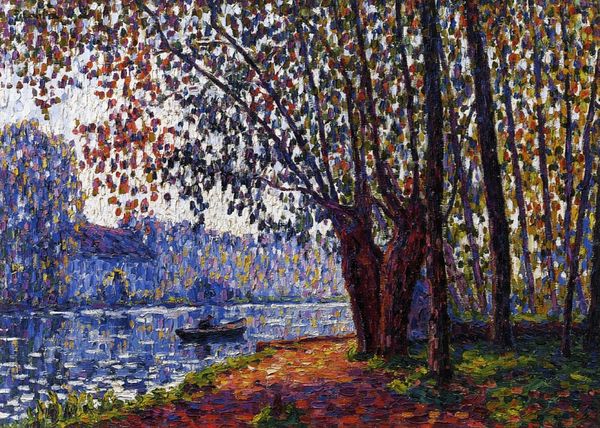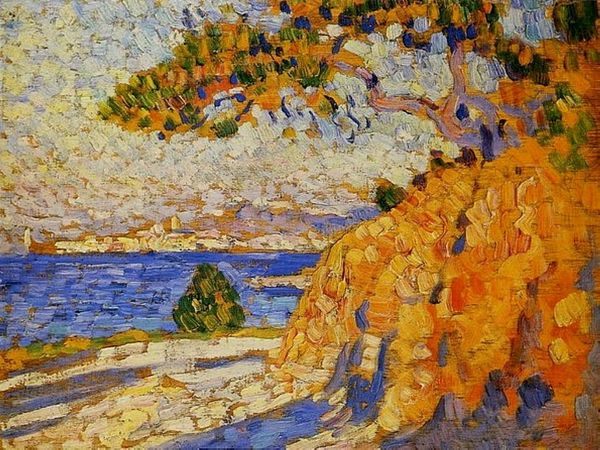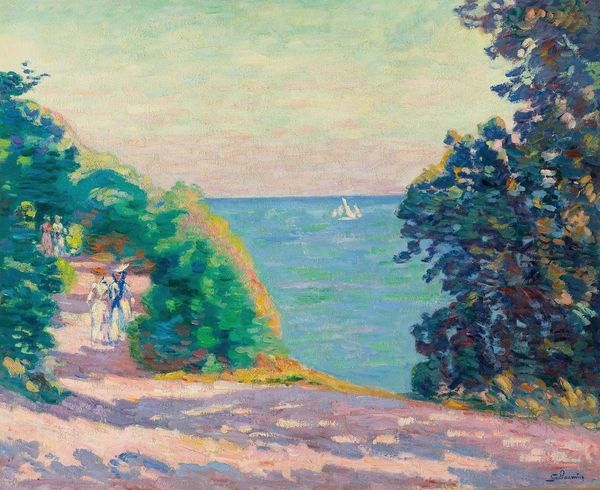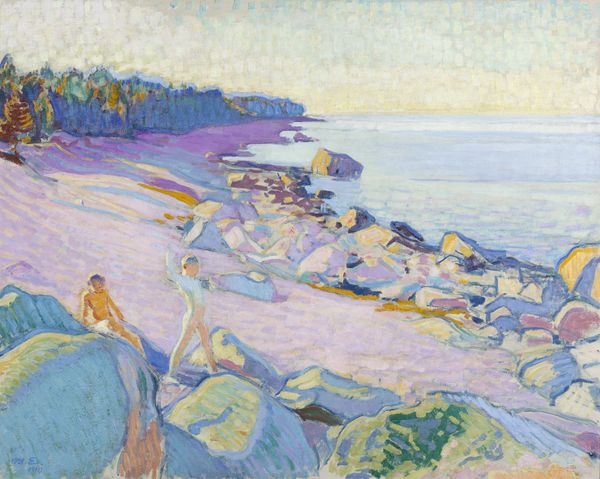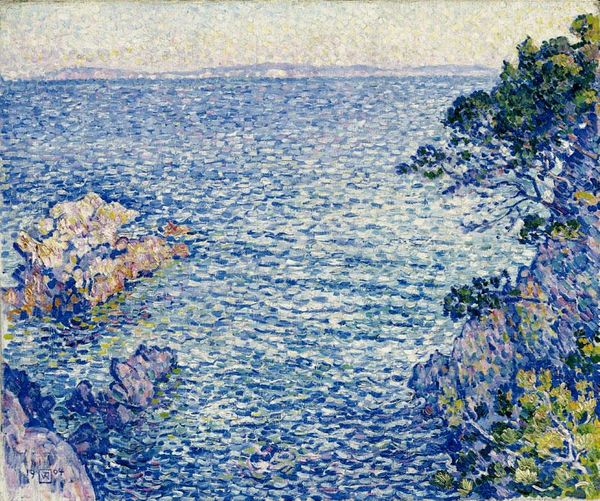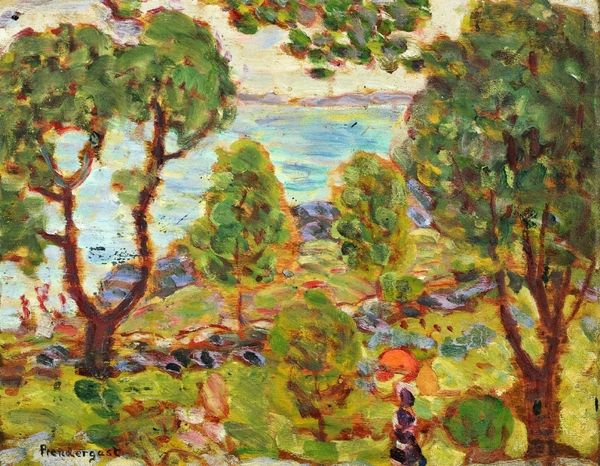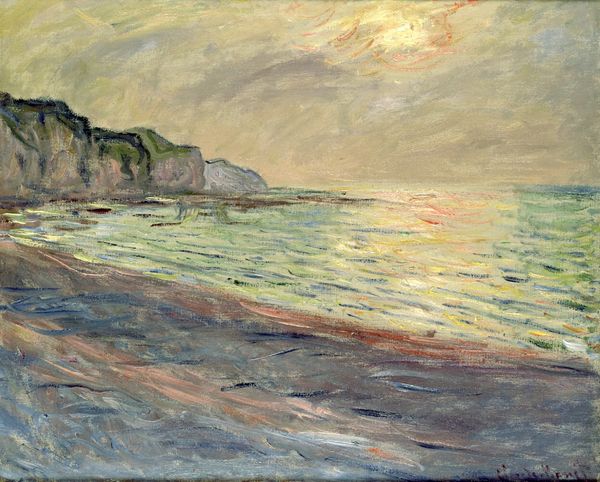
#
tree
#
abstract expressionism
#
abstract painting
#
fauvism
#
impressionist landscape
#
oil painting
#
fluid art
#
acrylic on canvas
#
seascape
#
paint stroke
#
expressionist
Copyright: Public domain US
Curator: Henri Matisse painted "The Gulf of Saint Tropez" in 1904. Editor: Immediately striking, isn't it? The energy of those brushstrokes, that heightened palette! It's so alive; the whole scene is positively vibrating. Curator: Indeed, we see the nascent development of what would become Fauvism, emphasizing pure color and simplification of form. This work reflects his time spent in the south of France. Consider the context, though; what do you think about the place this landscape occupied within early 20th century French art scene? Editor: One of bourgeois escape from the grim urban and social realities. Matisse's vision here reflects a growing trend—a focus on leisure, the south of France as an exotic space—yet democratizing artistic inspiration in painting familiar vacation scenery accessible to all. Curator: But it is his distinctive formal language that's so engaging. Note how the composition leads the eye across the canvas. The bold tree on the right acting as a strong vertical counterpoint to the horizontal expanse of the water and the distant hills. Editor: True, the way the colors interact really generates this emotional intensity, far beyond accurate visual rendering, though I think it has its base on observational studies. Red is applied alongside blue. Those fiery oranges really highlight and brighten the scene! But how does this vibrant and optimistic picture reconcile with societal struggles, particularly around representation? Curator: We need not ignore, though, the sheer joy Matisse appears to have derived from paint. It’s about visual sensation! That almost tangible feeling of being present within this very distinct setting in time. Editor: Well, seeing it now, one starts to acknowledge Matisse’s own personal perspective on leisure and representation, the visual landscape painting of the era which cannot disregard sociopolitical questions or concerns of accessibility to public viewership in any capacity. Curator: Fair enough. Perhaps both perspectives enhance our viewing pleasure and contribute to our deeper understanding of Matisse's contribution. Editor: Ultimately, this vibrant painting acts as a testament to the complexities embedded in even the most aesthetically pleasing art.
Comments
No comments
Be the first to comment and join the conversation on the ultimate creative platform.
